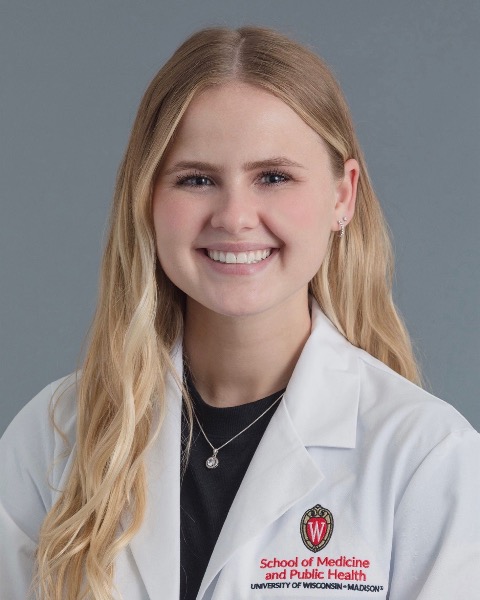Emergency Medicine 4
Session: Emergency Medicine 4
246 - Evaluating Child Sex Trafficking Screening Trends: Changing Screening Responses in a Growing Online World
Saturday, April 26, 2025
2:30pm - 4:45pm HST
Publication Number: 246.4590
Hanna K. Jens, University of Wisconsin School of Medicine and Public Health, Madison, WI, United States; Christopher Shank, University of Wisconsin School of Medicine and Public Health, Boise, ID, United States; Irene Hurst, University of Wisconsin School of Medicine and Public Health, Madison, WI, United States

Hanna K. Jens, BS (she/her/hers)
Medical Student
University of Wisconsin School of Medicine and Public Health
Madison, Wisconsin, United States
Presenting Author(s)
Background: Child sex trafficking (CST) is an underreported crime and worldwide public health issue that evades detection. Many health centers, including Emergency Departments (ED), employ CST screening tools to identify potential victims. This study aimed to determine how responses to an electronic CST screening tool have changed since the COVID-19 pandemic.
Objective: Our objective is to evaluate the prevalence of sexual image and illicit video sharing and number of sexual partners pre- and post-pandemic among high-risk adolescents. Our hypothesis is that illicit photo and video sharing has increased while the reported number of sexual partners has decreased.
Design/Methods: Responses to a confidential, electronic, and validated CST screening tool were collected at a Midwestern (MW) academic ED post-pandemic (2022–2024) and compared to previously published data using the same tool at a Southwestern (SW) pediatric academic ED pre-pandemic (2019–2020). Surveyed adolescents were between 12-17 years of age, spoke English or Spanish, and had high-risk chief complaints, such as psychiatric, genitourinary, or trafficking concerns. Descriptive statistics and chi-square analyses were used to compare demographic characteristics and survey question responses.
Results: 722 screening responses were collected at the MW study site with 597 eligible for analysis. 29 patients were identified as CST victims (prevalence 4.9%). Respondents had a median age of 15 years at each study site. Differences were found between the two sample populations’ reported gender (MW 59.8% and SW 72.6% female, p < 0.01) and race/ethnicity (White, non-Hispanic MW 63.5% vs SW 39.6%, p < 0.01, Table 1). MW respondents reported posing for illicit photos and videos more than SW respondents (43.3% vs 25.7%, p < 0.01), while MW respondents had fewer sexual partners than SW respondents (Table 2). True-positive trafficking victims also reported increased posing for illicit media content following the pandemic (MW 82.1% vs SW 31.9%, p < 0.01), but no statistically significant difference in their number of sexual partners (Table 3).
Conclusion(s): On a validated CST screening tool, high-risk adolescents reported increased posing for illicit media content and fewer sexual partners following the pandemic. Trafficking victims also posed for online images more often post-pandemic but had no statistically significant difference in number of sexual partners. Differences in demographics among screened groups were noted, which may indicate non-generalizable differences between the populations at each site.
Table 1 - Demographics of Participants, Stratified by Data Set Location
.png)
Table 2 - Overall Trafficking Screening Tool Responses, Stratified by Data Set Location
.png)
Table 3 - True-Positive Trafficking Victims' Screening Tool Responses, Stratified by Data Set Location
.png)
Table 1 - Demographics of Participants, Stratified by Data Set Location
.png)
Table 2 - Overall Trafficking Screening Tool Responses, Stratified by Data Set Location
.png)
Table 3 - True-Positive Trafficking Victims' Screening Tool Responses, Stratified by Data Set Location
.png)

